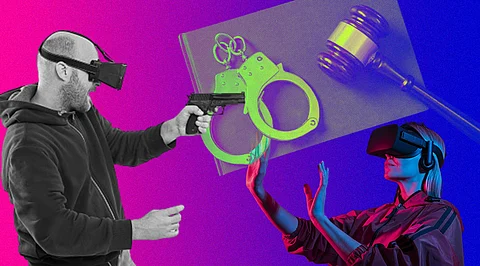
- InsightsInsights
- CryptocurrenciesCryptocurrencies
- Stocks
- White Papers
- IndustryIndustry
- GeographyGeography


Killing someone is a criminal offense and we don't actually have to remind you that. But is killing someone's avatar in the metaverse, just as serious? The metaverse will be shaped by the technology we use to access it, which could include virtual reality (VR), augmented reality (AR), and brain-computer interfaces (BCI). As you know, the popularity of metaverse and virtual worlds is constantly raising and there is always something new to this technology that people want to explore to the extent crimes in the real world have their equivalent in the virtual.
Crimes like killing, stealing, sexual assault, and threatening are punishable offenses if they are carried out against a physical person, but within virtual worlds, it seems that the rules change. Up to what point? Here we explain what the law says about these actions and where is the line that separates physical crimes from those committed in virtual worlds.
In the Criminal Code, murder is detailed in article 139 and is punishable by between 15 and 25 years in prison, but applies to the death of another person (in the real world). As can be anticipated, killing a person's avatar is not punished in the same way.
The crime against moral integrity can be applied. In the most extreme cases, where the death of the avatar really supposes an affectation for the person, the article 173 of the Penal Code, which regulates degrading treatment, workplace harassment, real estate harassment, unfair harassment, and domestic violence and is punishable by a prison sentence of 6 months to 2 years for "acts that seriously undermine moral integrity in any area".
An avatar is our image. Another crime that can be applied to actions with the avatars of the metaverse is article 197, of the crime of discovery and disclosure of secrets as a violation of privacy. In this context, we can interpret that an avatar is closely linked to the image of a person and that damaging that avatar also means damaging someone's image.
